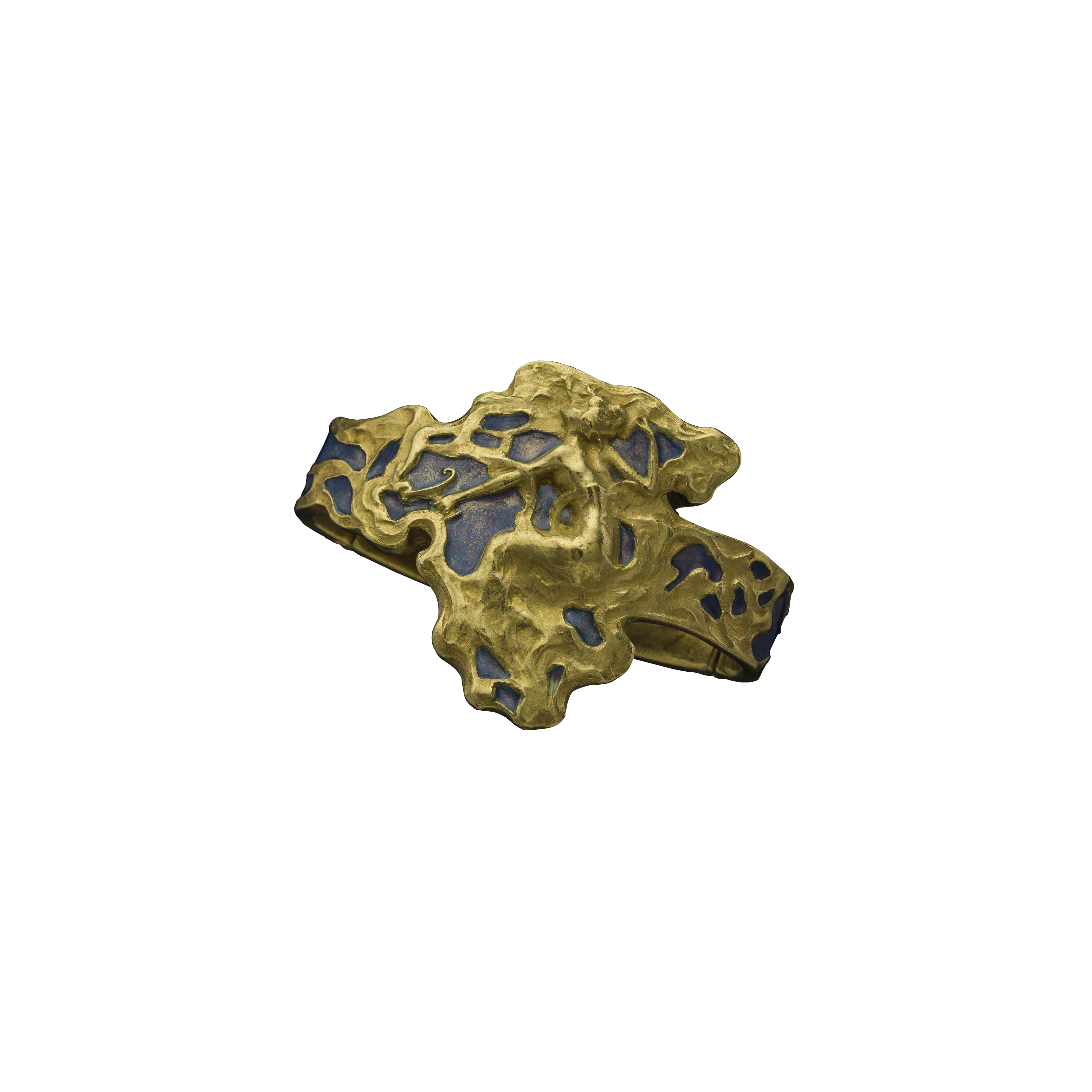
">
クラヴァットあるいはスカーフ・リング
| 作品名 | クラバットもしくはスカーフ用のピン |
| 制作年 | 1900年頃 |
| 制作国 | フランス |
| 制作者 | ルネ・ラリック |
| 素材 | エナメル、ゴールド |
| サイズ | L21.5mm, W30mm,H17mm |
作品説明
フランス製のアール・ヌーヴォーのイエロー・ゴールドとエネメルのクラヴァット(ネッカチーフ)あるいはスカーフ用リングは、ルネ・ラリックによる1900年頃のもので、蝶番で連結された、正面に向かって拡張する幅広のプレーンなバンドはニンフを表現しており、顔を上に向けて右手を挙げ、装飾した杯を左手に持ってモーヴ・ブルーのエナメルの斑紋で分割されたゴールドに輝く雲の中に坐っている。バンドの内側には“18 Aout 1900”と銘刻されており、ネッカチーフあるいはスカーフを然るべき位置に保つための先の尖ったピンが付いている。外側にはLALIQUEと銘刻され、ゴールドに対するフランスの極印が刻印されている。
解説
このクラヴァットあるいはスカーフ用リングは、アール・ヌーヴォー・ムーヴメントのリーダーであるルネ・ラリック(1860-1045)によって男性向けにデザインされた極めて数少ないジュエリーのグループに属している。それらはカフ・リンクスやリング、そしてここにあるような、クラヴァットもリングも確実に動かないようにする内側の棘のようなピンによって申し分のないものにされているスカーフ・リングであった。彼の男性用のフィンガー・リングと同様にそれは性格において極めて彫刻的で、またラリックのお好みのテーマのひとつである若い女性を表わしている。ここでは、黎明の空の中の様式化された雲と溶け合っている先を細めた四肢を伴う、彼女のスレンダーな裸体像がそれである。彼女の優雅さが、ここでは、ワインを飲む楽しさを連想させる、長く引き伸ばされたボート・シェイプのギリシャ風の杯で美しさを高められている。
さらに、小さなスケールにもかかわらず、このスカーフ・リングはアーティストのオリジナリティと彼の職人技のクォリティを如実に示している。それはパリの文壇と政治界におけるラリックの数多い賛美者のひとりによって着用されたもので、その有名な人物のひとりであるコント・ロベール・ド・モンテスキューはラリックのショップを訪れることのスリルを記すエッセイを著した。
意味ありげに、このスカーフ・リングの内側に刻まれた1900年8月18日という日付はパリ万国博覧会と符合しているが、その時点でラリックは名声の絶頂にあり、彼のスタンドは群れ成す観衆を引き寄せた。